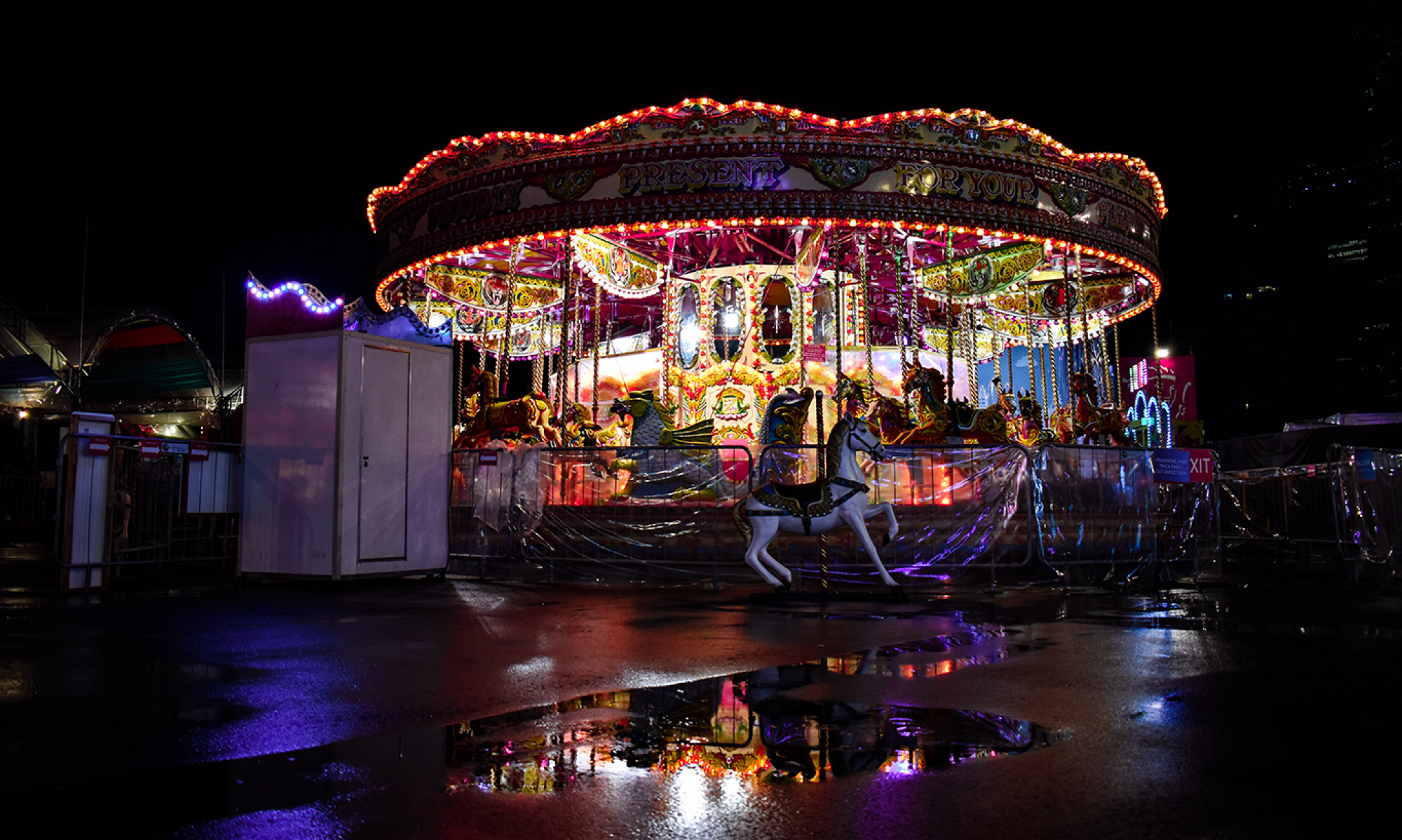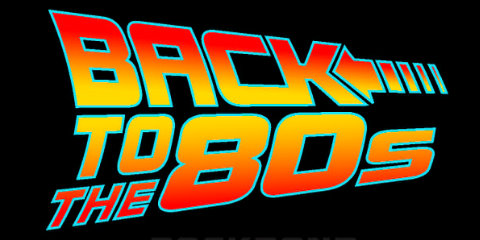My mama always said, “Life was like a box of chocolates. You never know what you’re gonna get.”
Forrest Gump 1994
In this project, we were tasked to reinterpret our chosen movie quotes and create imageries using Photoshop and found pictures. It draws inspiration from Surrealism and Dadaism, making imageries that transcends cliche solutions and responses, strongly based on spontaneity and randomness. (https://oss.adm.ntu.edu.sg/bren0022/a-surreal-nonsensical-dream/)
Brainstorming
Before embarking on the tedious but fun journey of surrealistic image collaging, I thought through and brainstormed for a concise theme that summarises my love for film- and that answer is the 1980s movies. In the recent years, 1980s nostalgia has been on a rise and 1980s themed homages is prevalent in many films, such as the Duffer Brother’s Stranger Things, Andy Muschietti’s IT or James Gunn’s Guardians of the Galaxy, to name a few.

1980s
I decided to follow this theme since I loved watching 1980 blockbusters growing up as a teenager, movies like Ghostbusters (1984), The Shining (1985), or Nightmare on Elm Street (1984), etc. The 1980s was a special time as it was the aftermath following the wave of film popularity preceding Hollywood’s Golden Age. The film in this period of time was characterised as high concept films with a cinematic plot that could be easily distinguished by one or two sentences, typically with a few strong characters to build up a narrative. It was the rise of blockbusters, but not built on special effects like the films today. It was also a period with many political tension since it was the rise of political conservatism, particularly Thatcher and Reagan; Filmmakers pivoted to make their form of entertainment uplifting and joyful.
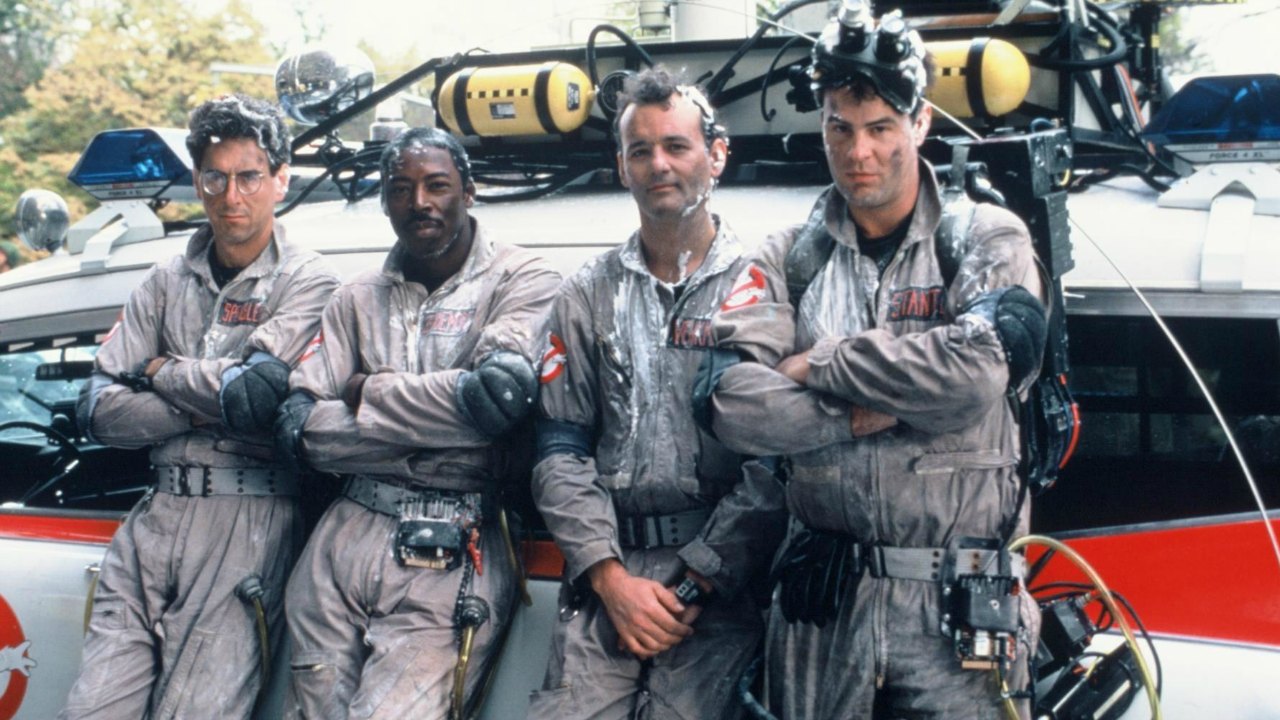
________________________________________________________
Before I begin, I would have to list out a series of movies I loved that were from the 1980s, and that was a long list:
- Ghostbusters (Comedy) (1984),
- Back to the Future (Sci-Fi) (1985),
- Blade Runner (Neo-Noir) (1982),
- The Shining (Horror) (1980),
- Nightmare on Elm Street (Horror) (1984),
- Honey, I Shrunk the Kids (Family Comedy) (1989),
- Breakfast Club (Coming-to-age) (1985),
- Dead Poet Society (Coming-to-age) (1989),
- The Poltergeist (Horror) (1982),
- The Thing (Thriller) (1982)
- Ferris Bueller’s Day Off (Coming-to-age) (1986)
- The Evil Dead (Horror) (1981)
- Predator (Thriller) (1987)
- Etc
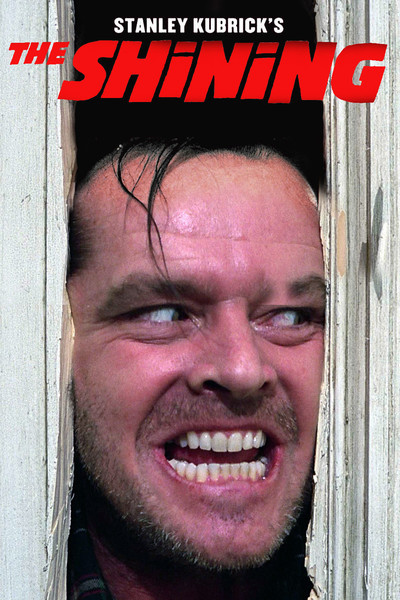 With a list of my favourite 1980’s movies, I had to come up with a few to quote from and that could only be done through re-watching everyone of them. After a few movie marathons, I realised that the movies that I quoted from were predominantly from coming-to-age related movies, which was a genre of film that focused on the protagonists’ growth into adulthood- to say the least, was relatable to me.
With a list of my favourite 1980’s movies, I had to come up with a few to quote from and that could only be done through re-watching everyone of them. After a few movie marathons, I realised that the movies that I quoted from were predominantly from coming-to-age related movies, which was a genre of film that focused on the protagonists’ growth into adulthood- to say the least, was relatable to me.
_________________________________________________________
Action
In spirit of Surrealism and Dadaism, I decided to incorporate an essence of a Surrealist/Dada artist for each imagery that I have, creating a 1980’s surrealism confusion.
I also wanted to pay homage to 1980’s movie posters, particularly the usage of one central subject figure that plays along to the audiences’ perspective, acting out an action/narrative imperative to the film. With that, I would recreate any iconic scene within the movie, and retell it in my perspective in a fantastical context, like the movie posters below.
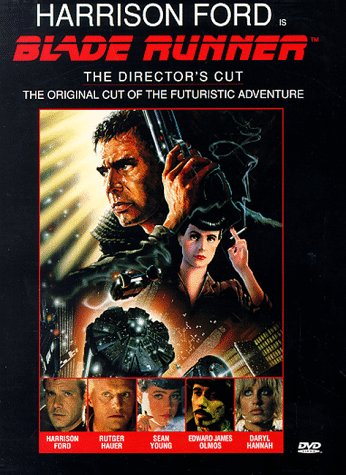
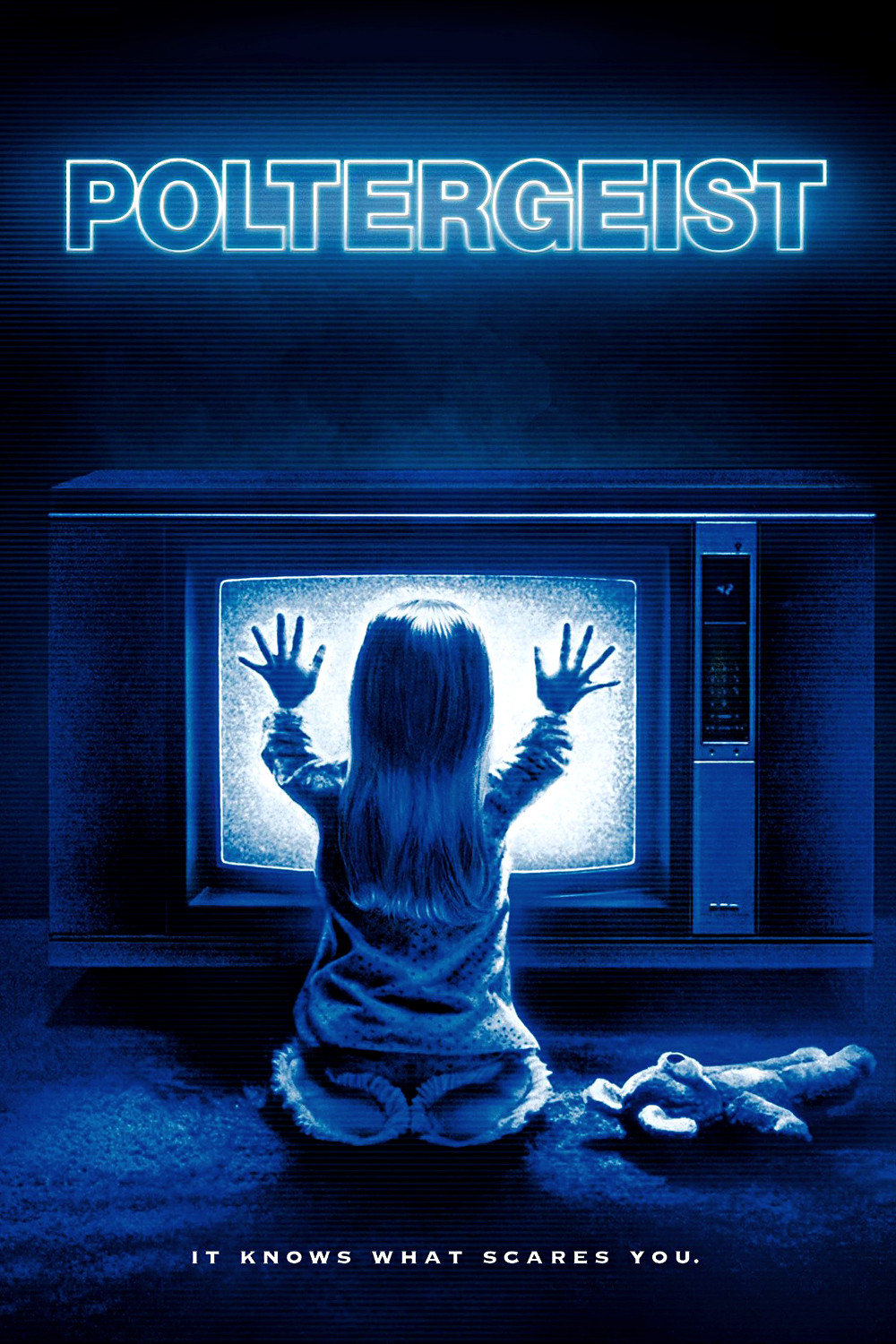
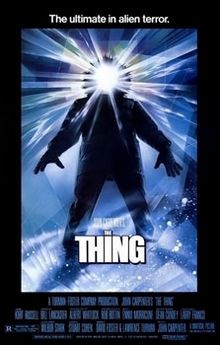
________________________________________________________

________________________________________________________
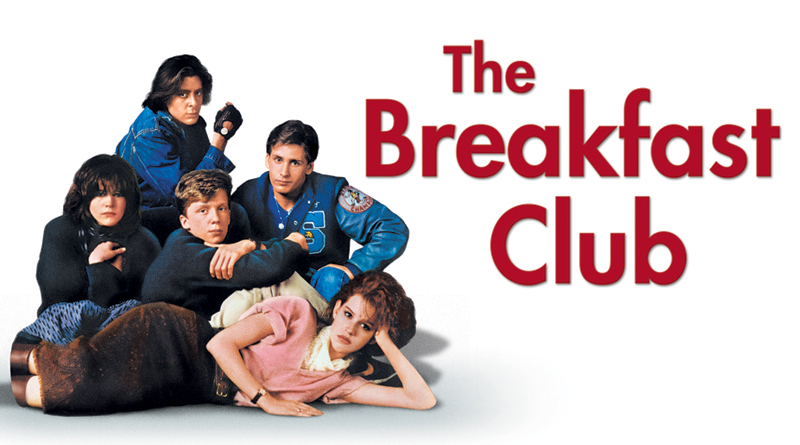
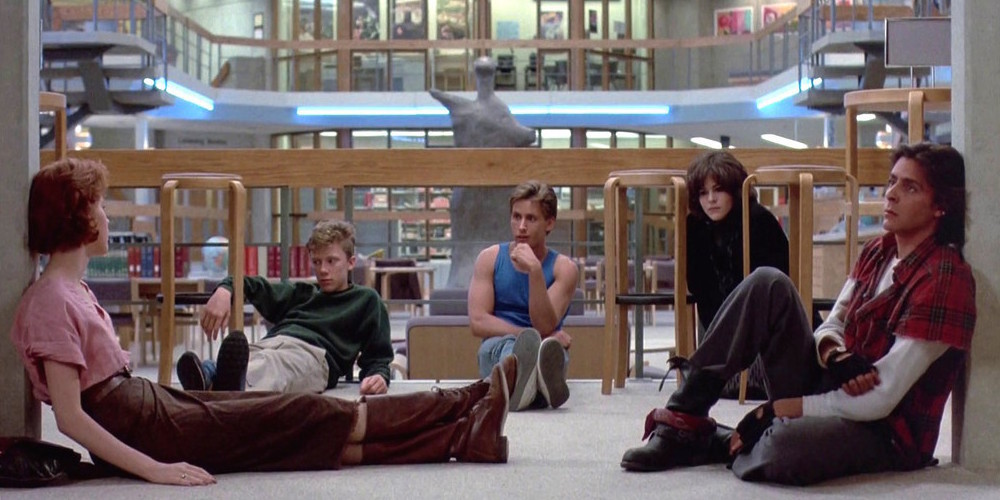
“You see us as you want to see us- in the most convenient definitions” – Breakfast Club 1985 + Lucia Hartini
Referencing the quote to the meaning I understood from the movie, I interpreted the quote as a summation of how the characters feel from the stereotype society places on everyone one of them, looking at their every moves. In the film still above, they are in a midst of confessing to one another regarding their problems and trouble, how they are fallen into a particular stereotype and probably cannot mix around as real friends when they are out of that tiny space.
In this work, I referenced to Lucia Hartini’s work “My Child”. She is an Indonesian artist that focuses on broadcasting sensitive subject matters like gender equality in a predominantly Islamic Community through surrealistic paintings. She focuses on symbols like clouds, horses and babies to communicate an idea of a bigger and almighty entity looking down on her without being crude in the context of expression. In the work “My Child”, she is seen looking up, interacting with the deity, which is also her child by blood, interacting through a thin veil of spiritualism and religion without being specific to any religion. The usage of clouds also enhances the fantastical aesthetics.
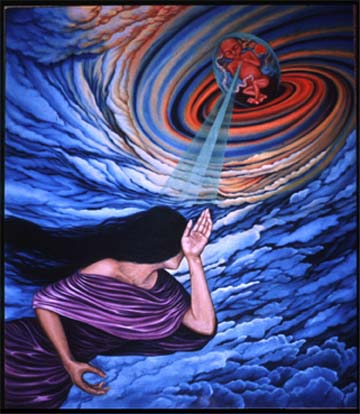

“You see us as you want to see us- in the most convenient definitions” – Breakfast Club 1985 + Lucia Hartini
Using the techniques I learnt from Hartini’s work, I created this collage referencing to the quote above. In this imagery, I wanted to exaggerate the stereotype each characters face from society, with the society imagined as a fly in this context- Flies see the world in a slower speed, giving them the ability to place judgement and react faster. I turned each character into a caricature: the beauty into Medusa, the nerd into Yoda, the jock into a football player, the crazy into a timebomb and the criminal into the hamburglar. The medusa represents a beautiful character that lacks of self confidence and leeches on compliments. The yoda represents a socially awkward character that is from another realm or environment. The football player, quite literally is a stereotype of a jock, one who focuses too much on sports and the events that come with it. The timebomb represents the quality of unpredictability and the damage it can do to people around it. And the hamburglar is the caricature of a burglar/criminal who is also the comic of the group. The fly (society) is seen coming out from the clouds like in Hartini’s works, it is essentially imagined as an almighty deity looking down and deciding the fate of the characters, with every facade on the compound eye looking at every directions. The characters are seen looking up at the fly, providing a visual direction for the audience. However, they are still in a comfortable position of leaning, unable to react to the impending judgement. The characters are also seen in a tight space, with the little breathing space implying the physical privacy that was seen in the film still, insinuating a conversation between them.
________________________________________________________
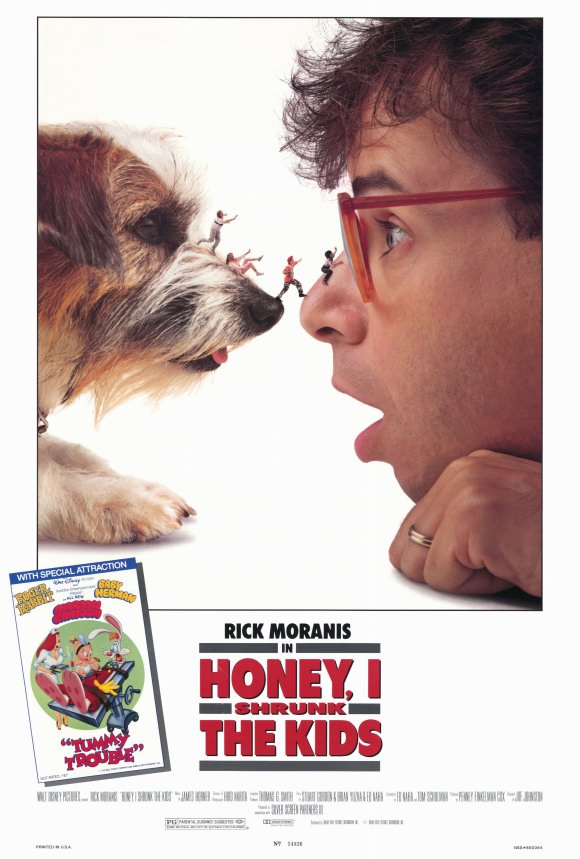
“Its funny, the moon looks the same size whether you’re big or small.”- Honey, I Shrunk the Kids 1989 + Rene Magritte
With my understanding of the movie, I interpreted the quote as an expression of figurative size. Throughout the beginning of the movie, the children are placed under a microscope of judgement by the adults, who fear that they are incapable of responsibility and protecting themselves. The adults on the other hand, are placed in a caricature of illogicality and insensibility. The quote expresses a paradox of “size”, the figurative size the characters felt and the literal size that they were in compared to the moon.
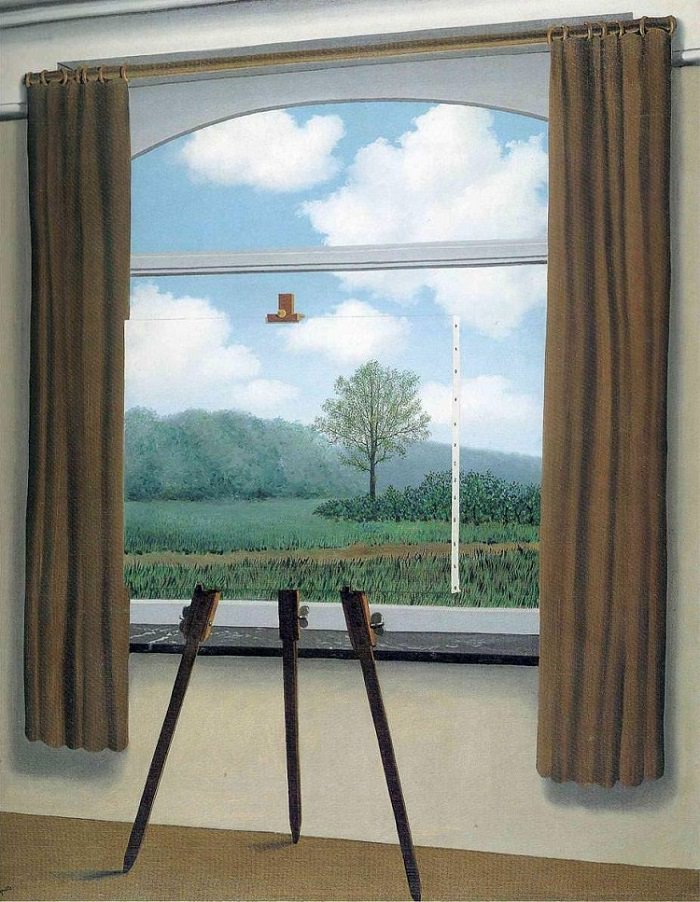
Hence, I wanted to play with the idea of a figurative and literal size, and this led me to the artist Rene Magritte. In Magritte’s work, he played with the idea of perspective and size. In this work, he places an easel in front of a window. The precise and intentional placing challenges the audience’s perspective of whether the tree stems from the environment outside the window or is the tree a physical painting. Hence, there is only two options for the audience, whether the tree is a few centimetres short or a few metres tall. The question is left unsolved and left for audiences to predict or think.
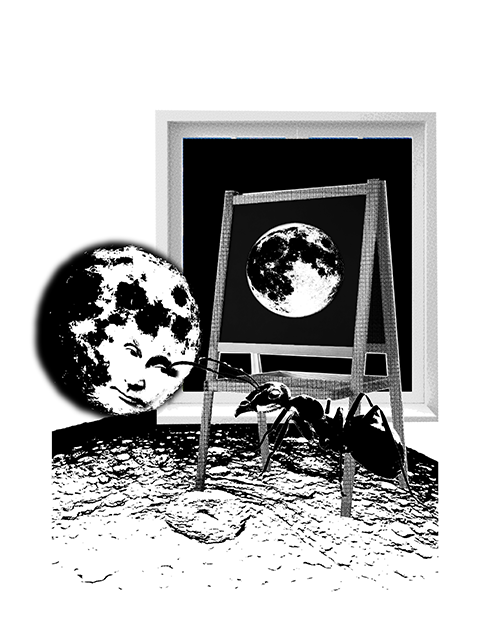
In my work, I wanted to play with Magritte’s perspective paradox and apply it to the moon and ant, which are the main characters apart from the children. In my work, I applied the same composition of an easel and a window, of which the subject matter is a moon. Hence, audience will question whether if the moon is the size of a painting or is the moon outside the window, broad as the space it is in. However, there is another moon right beside the window and easel, seen looking down at the ant. The conversation between the two characters leads to the question of which moon is of the real and actual size. The presence of the ant makes audience question if the moon is the size of an ant, or is the ant the same size as the moon. Further more, zooming out of the pictorial space, the ant is seen stepping on a ground that is textured like the moon, playing with the idea of three possible moons. This imagery references to the quote as to how there isn’t any real physical size, and the idea of “size” or “ability to withstand responsibility” is one’s entitlement and how you strive to achieve it.
________________________________________________________

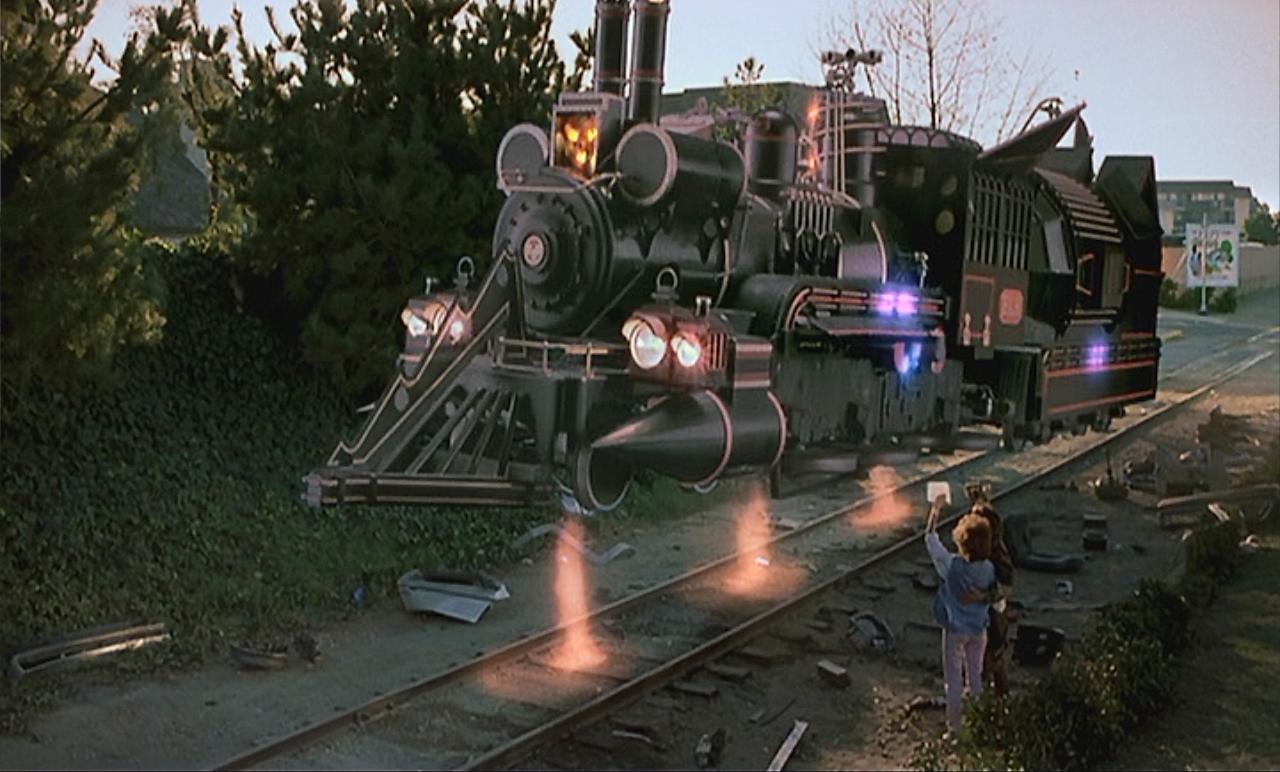
“Your future is whatever you make it, so make it a good one.” – Back to the Future 1985 + Dede Eri Supria
In the film still shown above, it is the last scene in the movie where Doctor Brown and Marty say goodbye. Doctor Brown was implied to have succeeded in his time travelling endeavors and had travelled back from the future with a time travelling train. I imagine the quote as an implication to wanderlust and passion, how Doctor Brown is encouraging Marty to chase his dreams and to never give up, as you are the one who decide where you are going.
In my work, I wanted to reimagine the scene of Doctor Brown flying off in a train, with the train as a representation of wanderlust. However, I had to use another caricature to portray Marty and I chose to reference to another Indonesian artist named Dede Eri Surpia, with his usage of clowns are protagonists. I liked the idea of using clowns as the characters fighting for their passion as in Dede’s works, they are always seen in industrialised environment, struggling to pursue their passion in an ever confusing environment that is rapidly growing and moving. In the work shown below, the clowns are seen floating in the air, struggling to make ends meet in a ghastly background that is almost a caricature of an industrialized city, like Jakarta where Dede is from.
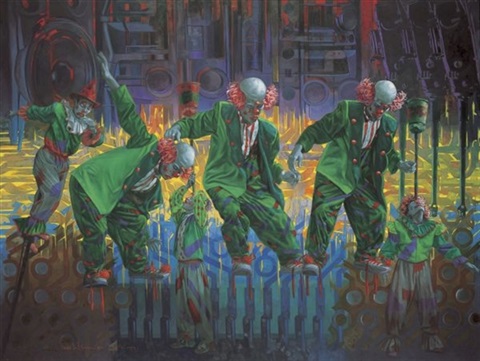
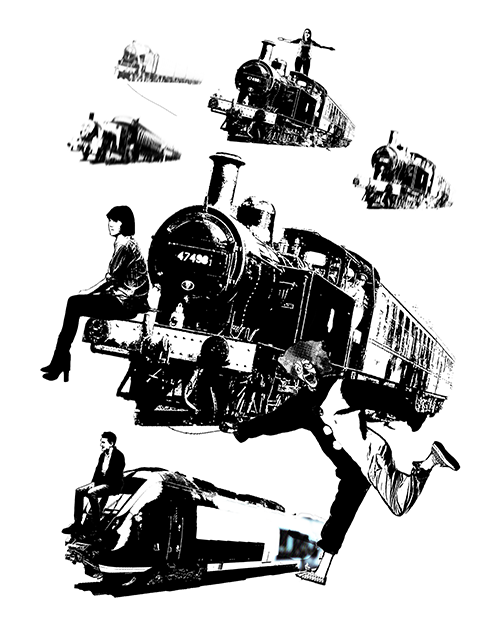
In my work, I wanted to play homage to the original film of Back to the Future by placing all the direction of the trains following the original film poster, which was the left side. I juxtaposed the the trains with same sized human beings sitting on the train, looking at the left side, as if looking forward to something in the distance. There is a clown at the right bottom of the image, representing the essence of passion I wanted to draw from Dede’s work, making him hold on to a string that is being pulled by the floating train. The idea of clowns and train contrasts strongly as there is subtle difference of metal versus skin, passion versus robotic movements. In any environment, trains are supposed to be a logical mode of transport with only one direction at a time, implying logic. However, with the theme of floating, it can move to any direction at any given time, hinting of wanderlust passion. In pursuit of technical accuracy, I used motion blur to hint of visual space, depicting how the trains are moving from a distant location to the audience’s eyes.
________________________________________________________
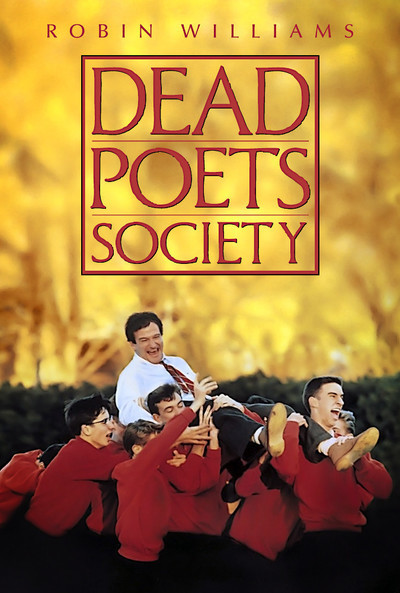
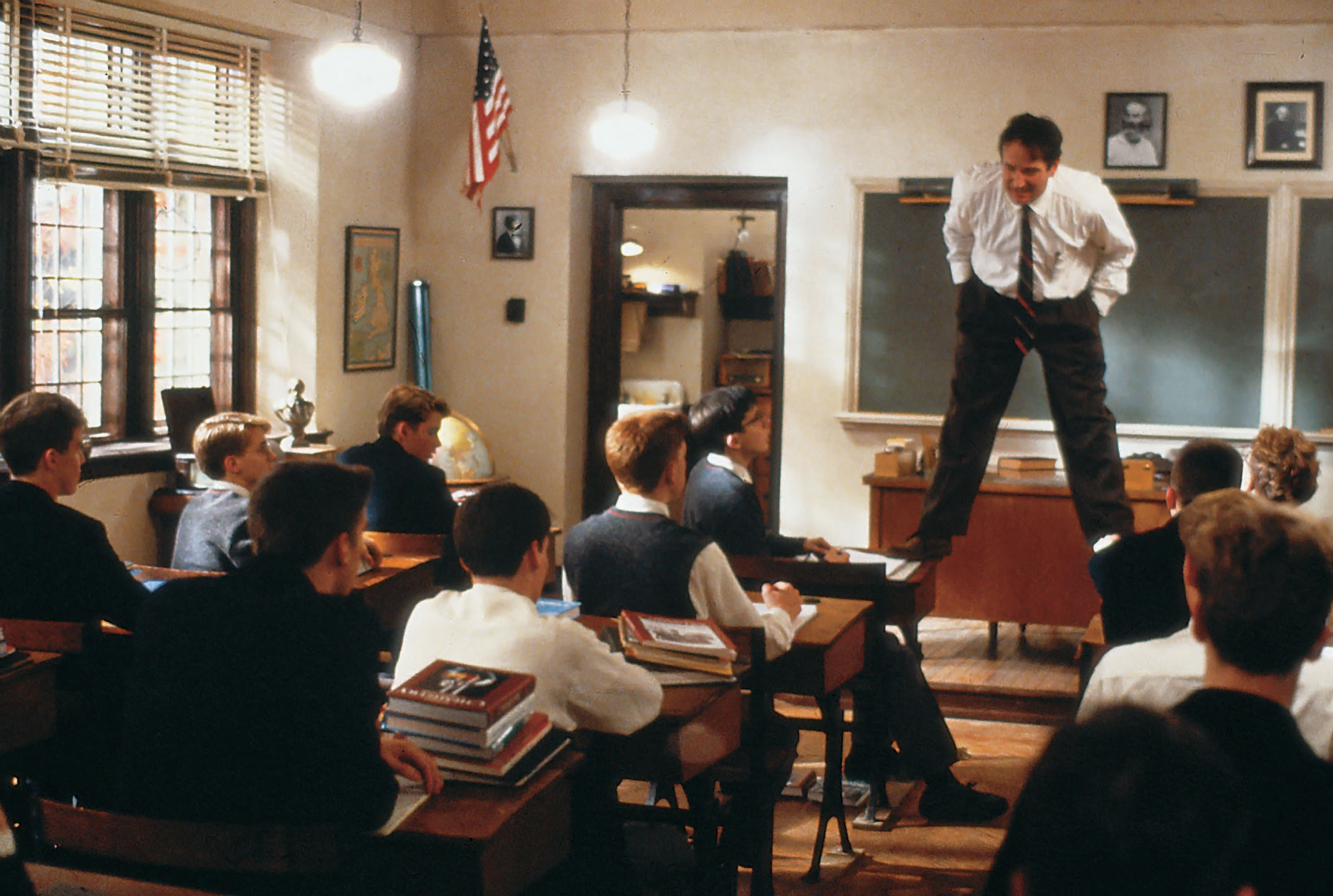
“Because believe it or not, everyone one of us in this room is going to stop breathing turn cold and die.” – Dead Poets Society 1989 + Salvador Dali
Last but not least, I have a quote from Dead poets Society as shown above. It is predominantly similar to the previous quotes as it is from a coming-to-age movie revolving around a group of teenagers with an inspiring teacher helping them pursue their passion. I wanted to bring out the idea of everyone being in a precarious position of “turning cold and die”, and emphasis on the aspect of time, since that is an element important in the movie itself since mortality is greatly discussed inside. In the film still and even the movie poster shown above, the teacher Mr Keatings is always shown with a certain level of hierarchy implying that he is a teacher and the guide to these children, via techniques in composition or colours.
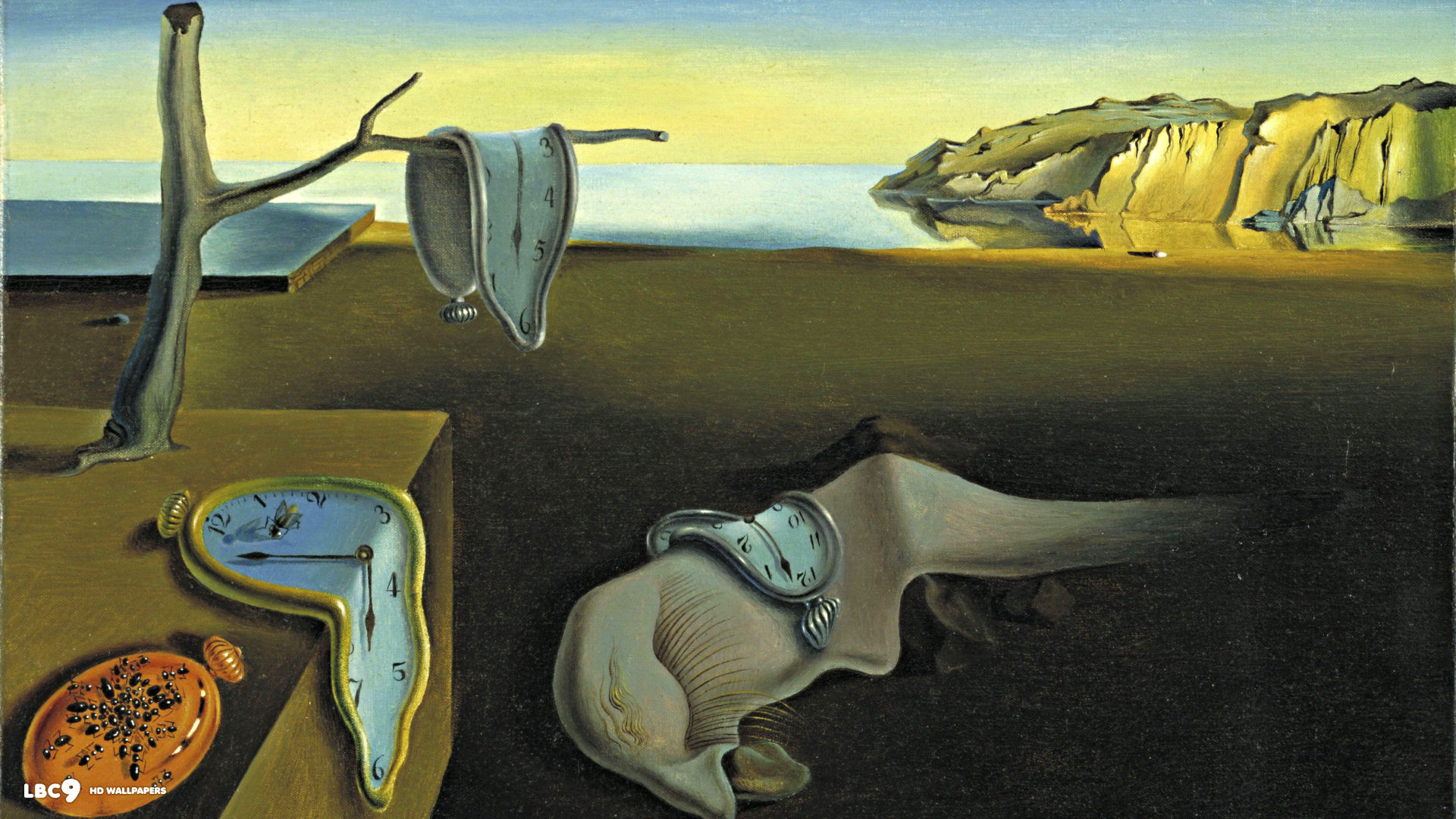
In my work, I referenced to Salvador Dali as I found that his works to have an eerie sense of mortality without any physical depiction of death itself. There is a morbid language that is unspoken, through the symbol of a melting clock. Hence, I extracted the melting clock as Mr Keatings, overlooking the characters in a higher and bigger position then the rest, symbolising death of passion. The play of size allows audience to direct their gaze at the clock, which is the focal point of the image. I chose to represent each of the main characters as a sculpture as I found that sculptures tend to lose their visual value when they are placed in a 2 dimensional plane, effectively losing their life, much like the idea of “turning cold and die”. I represented each character as a sculpture using their personality: the fun and joker as Marcel Duchamp’s Bicycle Wheel 1931, the quiet but thoughtful as Alberto Giacometti’s Pointing Man 1947, the romantic and innocent as the Cupid and the goal-oriented dreamer as Auguste Rodin’s the Thinker. The sculptures are seen standing on a barren wasteland looking up on the melting clock, just wasting their time away until a perpetual mortality. In homage to the film itself, where the main character of the goal-oriented dreamer dying, I decided to blur the Thinker in the background, hinting that something is happening to it in a still wasteland, probably it being the first to die off in this scenario.
________________________________________________________
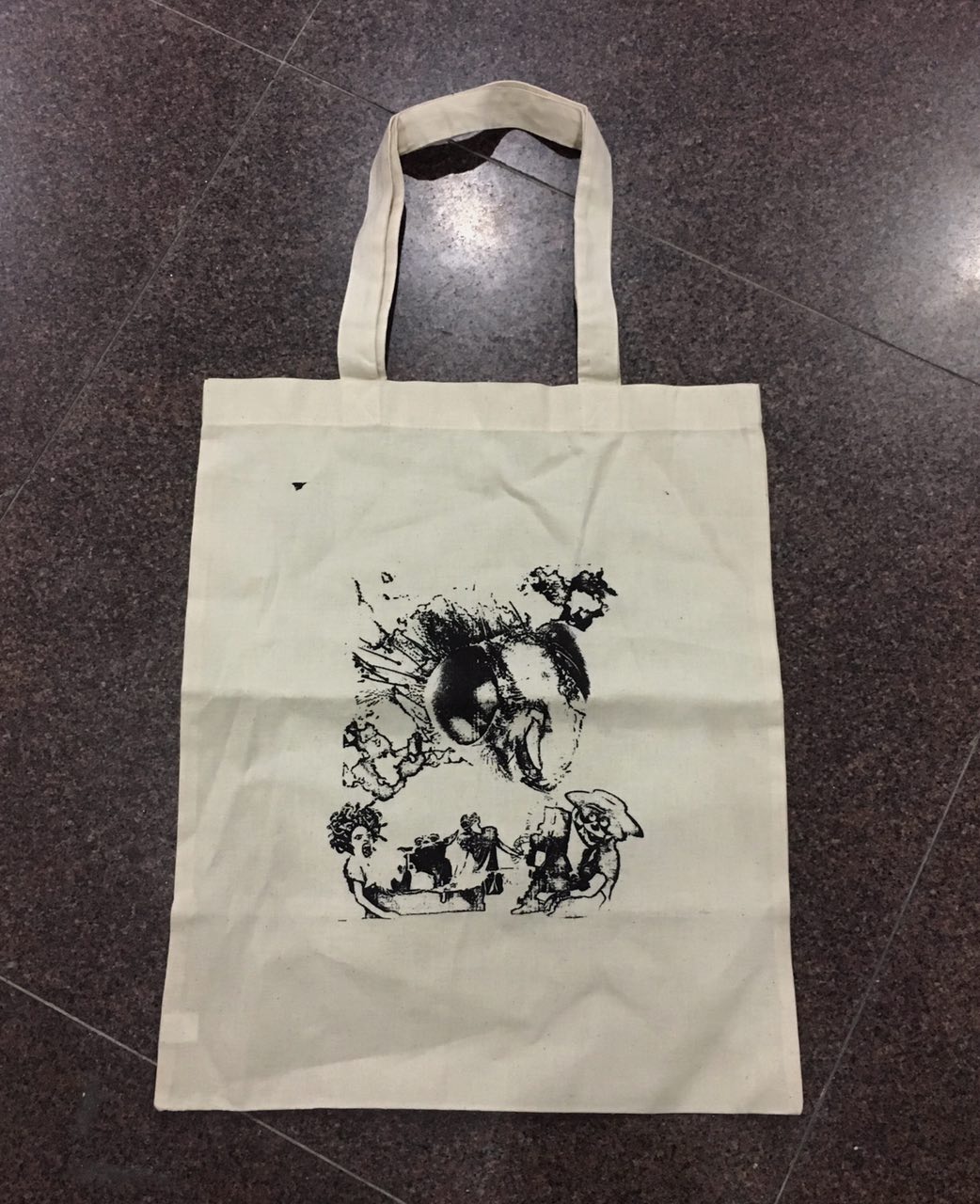
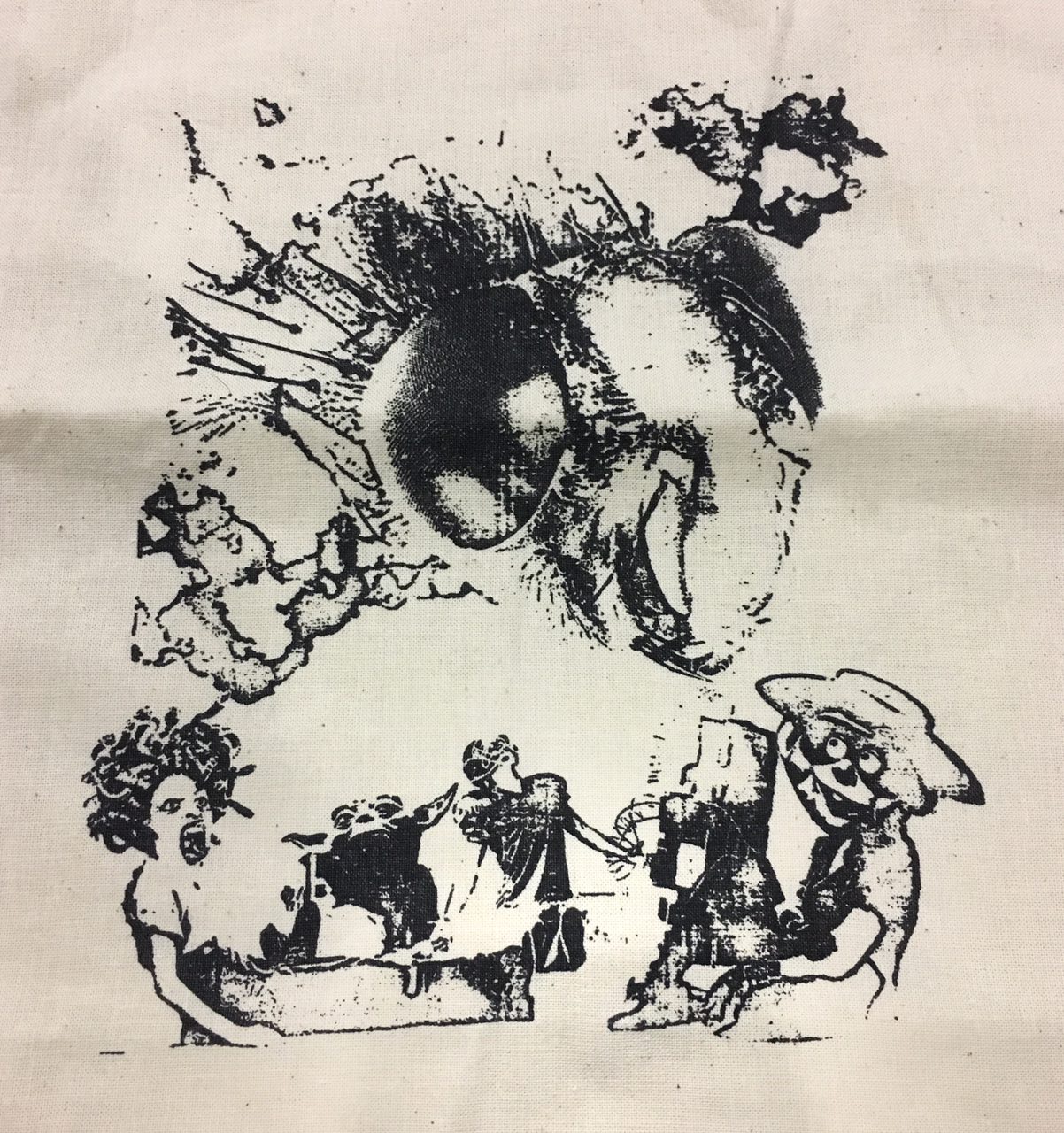
Following the process of Photoshopping and collaging the found images, we were required to silk screen the chosen quote onto a tote bag and present it. After a few attempts, the above photograph shows my final work of the quote from Breakfast Club, arguably my most favourited movie in the world. The process of silkscreen was tedious and difficult, especially since I tore one silkscreen board by accident. It is a process that is heavily underestimated, at which subtle difference in pressure and moisture can affect the final results.
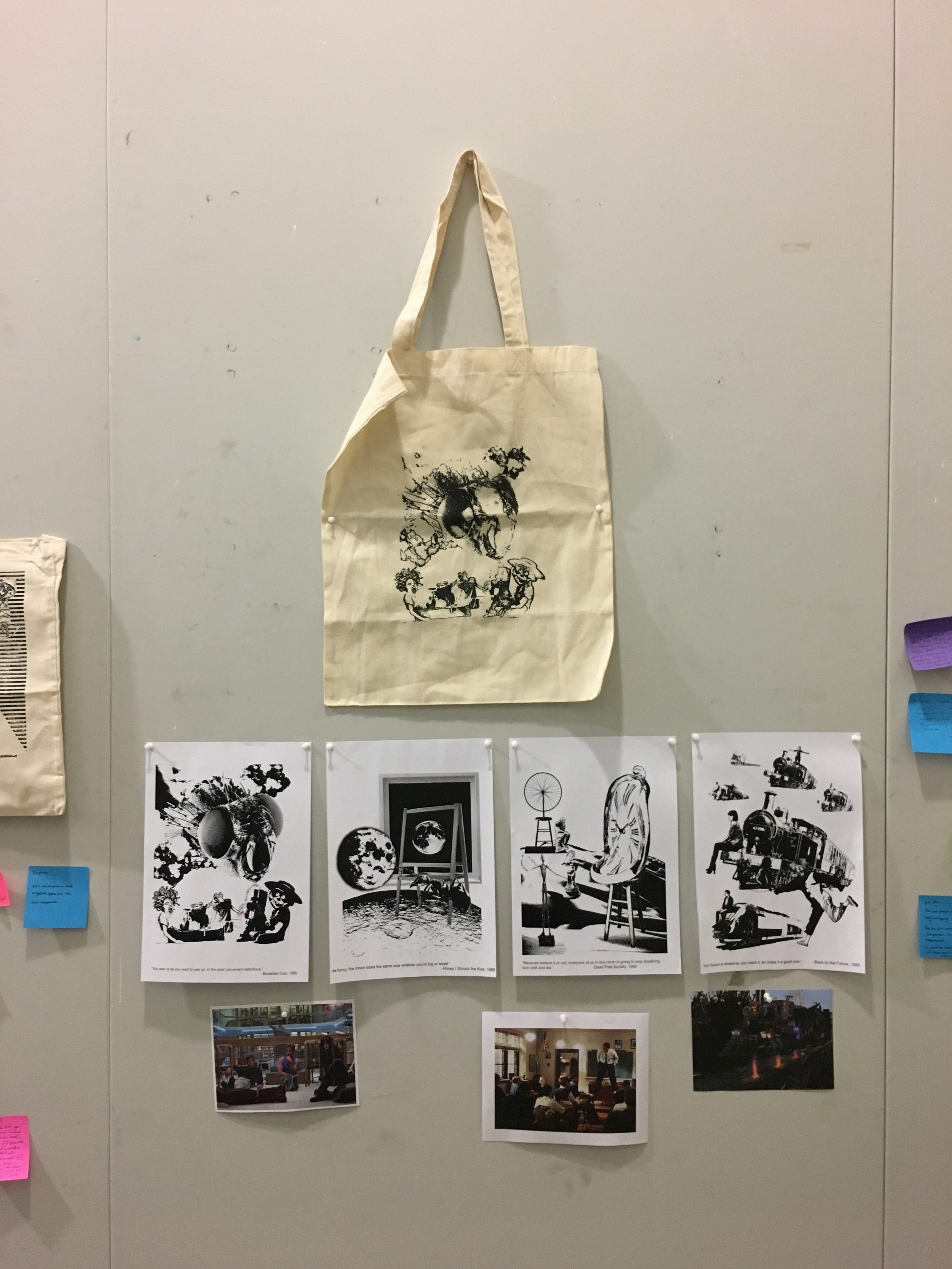
Throughout this assignment, I faced the challenge of patience and dexterity as both are tested in the context of photoshop and silkscreening. The journey of not knowing any Photoshop techniques to having tried both photoshop and silkscreen has been really challenging, but a fulfilling one nevertheless. From the comments I received from the post-presentation commentary, my main problems were technicality issues like the cutting of border from the Breakfast Club imagery, as well as the composition of the Back to the Future imagery.
________________________________________________________
